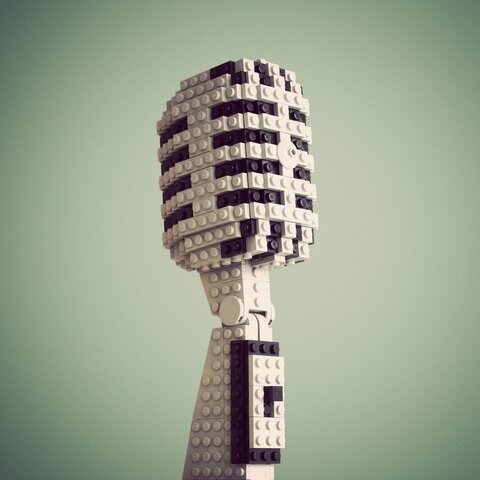This has been talked about before -- if you were going to ask how to fly
line arrays from a
counterweight set, then there'd be reason for concern, but hanging a
microphone isn't any more dangerous than hanging a lighting
fixture except that lighting fixtures usually have
safety cables, whereas microphones typically just get their cables tied to the
batten with tie
line.
As a general rule of the thumb, microphones do not weigh enough that when cables areused to suspend the weight of a
microphone, the mated
XLR connection or the cable will fail. However, if a cable gets snagged or pulled on by something, then there could be issues (most often, this is the case when the lighting guys are driving around in lifts during a light focus and they don't see the microphones until they hit them with lift and get tangled with the cable.
Presumably, at one of the
batten, you have a 30'
XLR cable
drop to get from the pipe down to the floor, and then the cable goes somewhere to a
stage box,
snake, or
mixer. I find the best solution is where the cable meets the
batten to use
gaff tape to secure the cable to the
batten. Tie
line doesn't work very well because the weight of the cable
drop can cause the cable to slide through the tie
line loop. At head height near the
ground, this cable should be flagged with some bright
spike tape so people walking on and off of the
stage can easily see the cable and don't get tangled with it.
Getting from the off-stage cable
drop to the on-stage cable/mic
drop can be done by just securing the cable to the
batten with tie
line. Then at the on-stage
drop, use
gaff tape again to prevent the cable from sliding through a tie
line loop.
Whether you have a
microphone designed for this purpose (e.g. a light-weight hanging choral mic with a lot of small-diameter cable built-in) or you're hanging something heavier (e.g. an
SM58, much heavier than a choral mic with no built-in cable -- albeit a terrible mic to use for hanging purposes) or not, you should be able to suspend a
microphone via just the cable. A choral mic has enough cable that usually the first
XLR connection is made on the
batten, but an
SM58 should have no problem being suspended from a well-mated
XLR connection (meaning the only way to
disconnect the cable from the
microphone is by pressing the
button on the
connector), and an
XLR cable should not see any damage from supporting the weight of a
microphone. I like to leave several loops of mic cable on the
batten above the mic
drop so I have some room to
play around with the
trim height of the
microphone.
If you've got enough sense to know how to hang a lighting
fixture, hanging a
microphone should be no problem for you. Where I see issues is primarily in the lighting guy hitting the microphones with a lift during the focus and when someone
flies the set with the
microphone on it to the
grid without realizing there's an attached cable. For that reason, when I get my
microphone at its
trim height, I put a [URL='http://www.amazon.com/gp/search/ref=sr_nr_n_12?rh=n%3A16310091%2Cn%3A%2116310161%2Cn%3A383599011%2Cn%3A16410171%2Cn%3A16410331&bbn=16410171&ie=UTF8&qid=1300299287&rnid=16410171"]linchpin[/URL] through the rope lock to lock off the set. I do the same thing with borders and scenery after they've been put at their
trim heights. A linchpin is well-known in our facility to mean "Don't move this out-of-trim unless you absolutely have to, and if you do, take a good look at what you're moving before you move it", whereas when there's a greater concern of life-safety or danger, I'll toss a full padlock on that set to ensure I, the only person who understands what is dangerous about a given set, am the person who operates that set. A hanging
microphone doesn't warrant that measure, but if just a linchpin is used on the rope lock, include a tag on on the pin or rope lock handle stating why the set is locked out.



